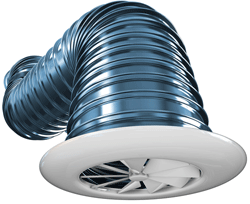Although it’s not a showy or obvious improvement, making HVAC upgrades to your home could pay off should you want to sell your house down the road. Even though your system still functions, replacing it might be a sound investment, especially if it’s more than 10 years old or has required excessive repairs.
Homebuyers look at HVAC systems as an essential, must-have component of homes. If yours is compromised in any way, a prospective buyer may not even consider your home as a possibility. Being able to list HVAC upgrades on the features’ list can give potential buyers the incentive to prioritize your home over others they’re seeing.
The National Association of Realtors surveys home buyers annually and has found that new HVAC upgrades have one of the highest rates of return compared to other home renovations. They report that the rate of return is 71%, which ranks above many that cost much more than a new HVAC system.
Best HVAC Upgrades
Our region requires both heating and cooling to maintain comfort. Since buyers put a high value on energy efficiency, it makes sense to make HVAC upgrades that deliver savings. The best system for your home depends on its floor plan and its heating and cooling load, which an HVAC pro can help you discover.
Besides the size of the system, you’ll also have different types of HVAC upgrades from which to choose, such as:
Zoning systems for sprawling, ranch-style or two-story homes.
Ductless mini-splits for homes with additions.
High-efficiency systems that meet the Department of Energy’s Energy Star or most-efficient requirements.
Each of these types of systems might help your home qualify as energy efficient, a designation that helps homebuyers receive more favorable financing. In fact, the DOE and the U.S. Green Building Council have found that people are willing to pay more for a home with high-efficiency HVAC upgrades. As a homeowner, you may also qualify for incentives to install high-efficiency equipment.
The pros at Air Assurance can evaluate your current home and system to see which HVAC upgrades could add value to your Broken Arrow home. Please contact us today to learn more.






